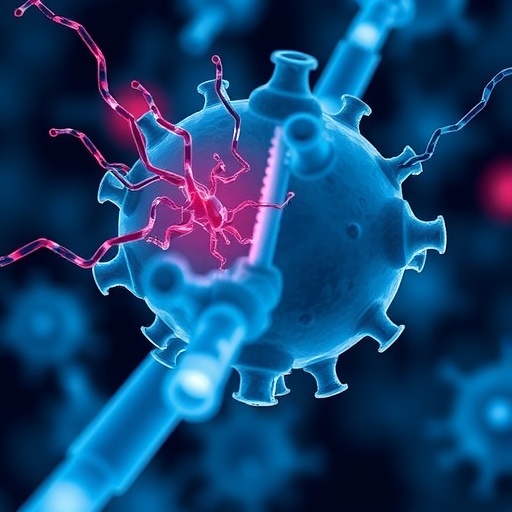February 23, 2017 (Cambridge, MA) — Proteins do most of the work inside the human body, supporting the structure, function, regulation, and repair of organs, tissues and cells. Proteins are synthesized as extended chains of amino acids that must fold into intricate three-dimensional shapes to perform their work. However, protein folding is a very delicate process: crowded conditions within a cell or environmental changes around the cell can drive proteins to misfold and clump together or aggregate–causing disease.
To support effective folding, cells deploy protein-folding chaperones to protect them from misfolding and aggregation. The heat-shock proteins 90 and 70 (HSP90 and HSP70) are protein-folding chaperones that together assist a large fraction of the proteins in cells to fold and function. In so doing, these major chaperones have been shown to alter the biological effects of genetic mutations in model organisms such as in plants, yeast, flies and fish. However, it has been unclear whether and how chaperones influence the consequences of genetic mutation in humans.
Researchers at the Whitehead Institute have now uncovered a role for HSP90 in humans, not only as a modifier of the effects of mutations, but as a mediator of the impact of the environment on the function of mutant proteins. And these effects of HSP90 can alter the course of human diseases. Their work is discussed in the paper, HSP90 shapes the consequences of human genetic variation, which appears today in Cell.
"By helping proteins fold and function, HSP90 influences a range of characteristics in simple organisms on which natural selection can act, and thus alters the course of evolution," says Georgios Karras, lead author of the study and a post-doctoral researcher at Whitehead Institute. "Our work demonstrates that HSP90 plays a similar role in humans, and in doing so it influences how disease-causing mutations manifest within cells and in the clinic. We found that HSP90 exerts a protective role on the functions of mutant proteins it directly binds, buffering the detrimental effects of mutations they carry."
While HSP90 may buffer the effect of a mutation, its ability to do so is highly susceptible to environment changes. "HSP90 evolved to cope with environmental stressors that perturb the folding of proteins within cells," says Luke Whitesell, a senior author of the paper and a senior scientist at Whitehead Institute. "Yet, because HSP90's capacity is limited it can also make the mutant protein much more sensitive to environmental challenges. We observed that even mild stresses, such as fever, can provoke major effects in cells expressing HSP90-buffered mutants. This finding may help to explain why mutations can have varied clinical manifestations from person to person."
Nevertheless, HSP90 cannot buffer all mutations. Some cause such problems that they cannot be rescued and these tend to be recognized by another chaperone, HSP70. Thus, the severity of the mutations' effects are reflected in the pattern of HSP90 vs. HSP70 binding to the mutant protein.
"This pattern fits well with the biochemical roles of HSP90 and HSP70 during protein-folding," Karras notes. "HSP70 binds extended stretches of amino acids that are typically hidden in the core of the normally folded protein, while HSP90 binds to partially folded proteins. A severe mutation that leads to major unfolding and loss-of-function mainly drives HSP70 binding greater than HSP90 binding. Milder mutations have the opposite effect. Based on this pattern, we estimate that HSP90 can influence the consequences of up to 25 percent of missense mutations in some genes."
The study was based on data mined from more than 1,500 disease-causing mutations associated with a diverse spectrum of diseases, including the cancer-predisposing syndrome Fanconi Anemia.
In the long run, this new understanding of protein folding within cells could help clinicians predict who is at risk to develop a particular disease and who is most likely to respond well to specific treatment approaches.
###
This work was supported by the Fanconi Anemia Research Fund (to S.L.), the Department of Defense (CDMRP BCRP W81XWH-14-1-0157 to S.L.), the Harold and Leila Y. Mathers Foundation, and the NIH (R37HL052725, RO1-DK43889 and PO1HL048546 to A.D.D.; P50HG004233 and R01HG001715 to M.V. and S.L.). S.L. was an investigator of the Howard Hughes Medical Institute. G.I.K. was supported by EMBO and HFSP Long-Term Fellowships.
Georgios Karras is a post-doctoral researcher and Luke Whitesell is a senior scientist in the Lindquist lab at Whitehead Institute.
Full Citation:
HSP90 shapes the consequences of human genetic variation
Cell, February 23, 2017
Georgios Ioannis Karras1, Nidhi Sahni2,3, Song Yi2,3, Máté Fischer1, Jenny Xie4, Marc Vidal2,3, Alan David D'Andrea4, Luke Whitesell1,6 and Susan Lindquist1,5,7
1 Whitehead Institute for Biomedical Research, Cambridge, MA 02142, USA
2 Center for Cancer Systems Biology and Department of Cancer Biology, Dana Farber Cancer Institute, Boston, MA 02215, USA
3 Department of Genetics, Harvard Medical School, Boston, MA 02115, USA
4 Center for DNA Damage and Repair and Department of Radiation Oncology, Dana Farber Cancer Institute, Harvard Medical School, Boston, MA 02215, USA
5 Department of Biology, Massachusetts Institute of Technology, and Howard Hughes Medical Institute, Cambridge MA 02139, USA
6 Correspondence to: Luke Whitesell: [email protected]
7 Deceased
Current address of N.S.: Department of Systems Biology, The University of Texas MD
Anderson Cancer Center, Houston, TX 77030, USA
Whitehead Institute is a world-renowned non-profit research institution dedicated to improving human health through basic biomedical research. Wholly independent in its governance, finances, and research programs, Whitehead Institute shares a close affiliation with Massachusetts Institute of Technology through its faculty, who hold joint MIT appointments.
Media Contact
Nicole Giese Rura
[email protected]
617-258-6851
@WhiteheadInst
http://www.wi.mit.edu/index.html
############
Story Source: Materials provided by Scienmag




